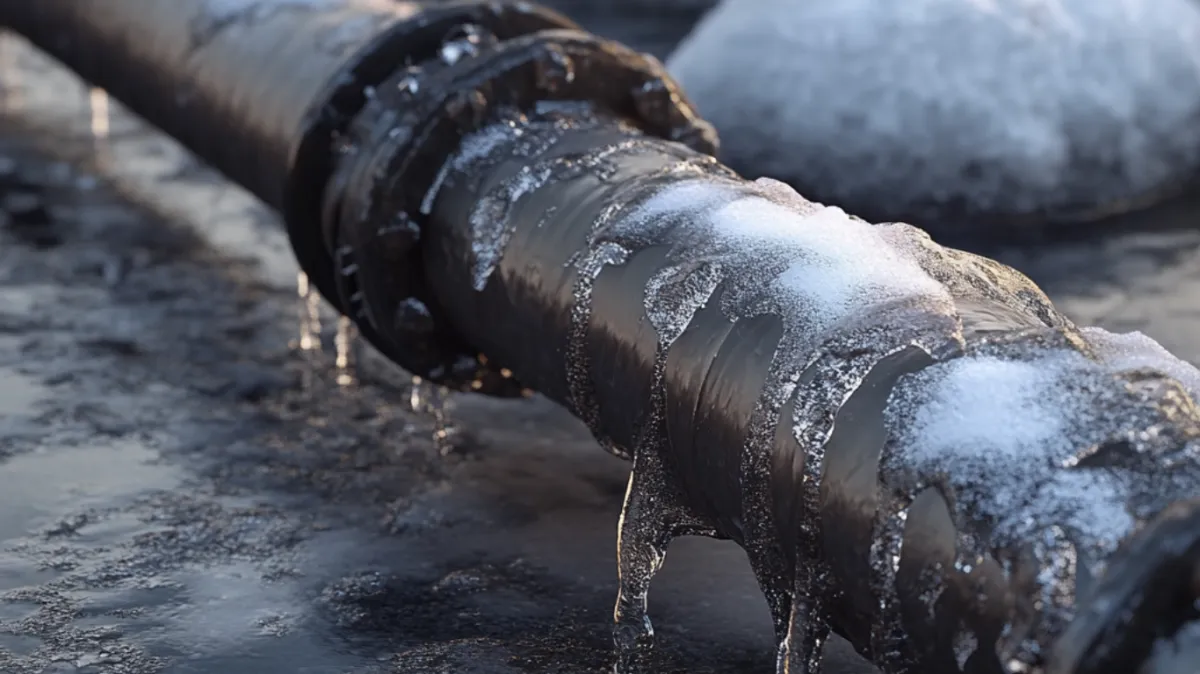
The Littleton Plumbing Journal
By Bravo Initiative, LLC

Spring Plumbing Check-Up: Preparing for the Thaw
Inspect Pipes for Winter Damage
Taking the time to thoroughly inspect your pipes as temperatures rise is a crucial step in preventing larger problems.
Check for Leaks
Leaks are a common result of winter’s wear and tear, especially in pipes exposed to freezing conditions.
Inspect Exposed Pipes: Look for visible signs of moisture, such as water spots, puddles, or rust around joints and connections.
Monitor Your Water Bill: Unexplained spikes in your water bill could indicate a slow, hidden leak in your plumbing system.
Examine Basement and Crawl Spaces: These areas are particularly susceptible to leaks due to their proximity to colder outdoor temperatures.
Test Water Pressure
Changes in water pressure can be an early warning sign of pipe damage or blockages caused by winter conditions.
Low Pressure in Faucets or Showers: This could signal a partially frozen pipe, buildup of sediment, or a hidden crack restricting water flow.
Fluctuating Pressure: Intermittent drops in water pressure may indicate a problem deeper within your plumbing system, such as a pressure regulator.
Professional Evaluation
While DIY inspections can catch surface-level issues, a professional plumber has the expertise and tools to identify hidden problems that may not be immediately apparent.
Advanced Leak Detection: Professionals use equipment like thermal imaging or acoustic leak detectors to locate leaks behind walls or underground.
Pipe Integrity Check: A thorough inspection can identify hairline cracks or weak spots in your pipes, preventing future breaks or bursts.
Winter Recovery Assessment: Experienced plumbers understand how winter affects plumbing systems and can provide targeted solutions to address seasonal wear and tear.
Clear Gutters and Outdoor Drains
Preparing your gutters and drains is a vital step in ensuring your property remains protected during the wet months ahead.
Remove Debris
Gutters and downspouts often accumulate debris over the winter months, such as leaves, sticks, and dirt, which can obstruct the flow of water.
Clean Thoroughly: Use gloves and a sturdy ladder to clear out leaves, twigs, and other buildup from your gutters and downspouts. Pay special attention to corners and joints where debris tends to gather.
Flush with Water: Once cleared, flush gutters and downspouts with a hose to ensure water flows freely and to identify any hidden blockages.
Inspect for Damage: While cleaning, check for cracks, sagging sections, or detached joints that may need repair.
Test Outdoor Drains
Outdoor drains, such as those around driveways, patios, or basement stairwells, are essential for directing rainwater away from your property.
Run Water Through Drains: Pour water into the drain openings to test their efficiency and check for slow drainage, which could indicate blockages.
Clear Obstructions: If water isn’t draining properly, use a drain snake or call a professional to remove any blockages caused by mud, debris, or ice remnants.
Check Drain Covers: Ensure drain covers are intact and free of damage to prevent debris from entering and clogging the system.
Install Gutter Guards
To reduce future maintenance and protect your gutters from clogs, consider installing gutter guards or screens.
Prevent Leaf Build-Up: Gutter guards keep out leaves, twigs, and other debris while allowing water to flow freely through the system.
Reduce Maintenance: With guards in place, you’ll spend less time cleaning gutters and more time enjoying the spring season.
Choose Durable Options: Look for high-quality materials like aluminum or stainless steel to ensure long-lasting protection against clogs.
Service Your Water Heater
After a long winter of heavy use, your water heater deserves some attention to ensure it continues to operate efficiently as you transition into spring. Regular maintenance not only prolongs the lifespan of your water heater but also helps you avoid unexpected breakdowns and costly repairs.
Flush the Tank
Over time, sediment and mineral deposits from your water supply accumulate at the bottom of your water heater tank. This buildup can reduce efficiency, cause strange noises, and even lead to premature failure of the unit.
Why Flushing is Important: Sediment creates a barrier between the water and the heating element, forcing your unit to work harder and use more energy.
How to Flush: Turn off the water heater, attach a garden hose to the drain valve, and empty the tank into a safe drainage area. Once emptied, briefly open the cold water supply to flush out remaining debris before refilling the tank.
Frequency: This process should be done at least once a year for optimal performance.
Inspect for Rust or Leaks
A thorough inspection of your water heater can help you catch early signs of trouble before they escalate into major problems.
Look for Corrosion: Examine the exterior of the tank for rust spots, which could indicate internal corrosion and the potential for leaks.
Check for Water Pooling: Look for water around the base of the unit, as pooling water may signal a leak in the tank or connections.
Inspect Connections: Examine valves, fittings, and the pressure relief valve to ensure they are secure and not dripping.
Adjust the Temperature
Setting the right temperature for your water heater is critical for energy efficiency and user safety.
Optimal Setting: The Department of Energy recommends setting your water heater thermostat to 120°F. This temperature is hot enough to meet your needs while minimizing energy consumption and reducing the risk of scalding.
Energy Savings: Lowering the temperature can save you on energy costs without compromising comfort.
Safety Tip: If you have young children or elderly individuals in your household, this temperature setting is especially important to prevent accidental burns.
Inspect and Maintain Sump Pumps
With spring showers on the horizon, ensuring your sump pump is in working order can prevent basement flooding.
Test Functionality: Pour a bucket of water into the sump pit to check if the pump activates and drains properly.
Clean the Pump: Remove debris from the pump and pit to prevent clogs.
Backup Power: Install a battery backup system to keep your sump pump running during power outages.
Preventative Maintenance is Key
A proactive approach to plumbing maintenance not only helps you avoid emergencies but also extends the lifespan of your system.
Schedule a Professional Inspection: A licensed plumber can conduct a comprehensive check-up to identify and fix any potential problems.
Update Fixtures: Replace outdated faucets, showerheads, or toilets with modern, energy-efficient models to conserve water and reduce utility bills.
Plan for Upgrades: Consider installing pipe insulation or upgrading to a tankless water heater for long-term savings and efficiency.
Trust Bravo Initiative for Your Spring Plumbing Needs
At Bravo Initiative, LLC, we specialize in helping homeowners prepare their plumbing systems for every season. From professional inspections to efficient repairs and upgrades, our team is here to keep your home running smoothly. Schedule your spring plumbing check-up today and enjoy the peace of mind that comes with a reliable plumbing system.
Spring is the season of renewal—make sure your plumbing is ready to handle it!

Schedule a Professional Inspection
Ready to schedule a professional inspection? Contact us today.

